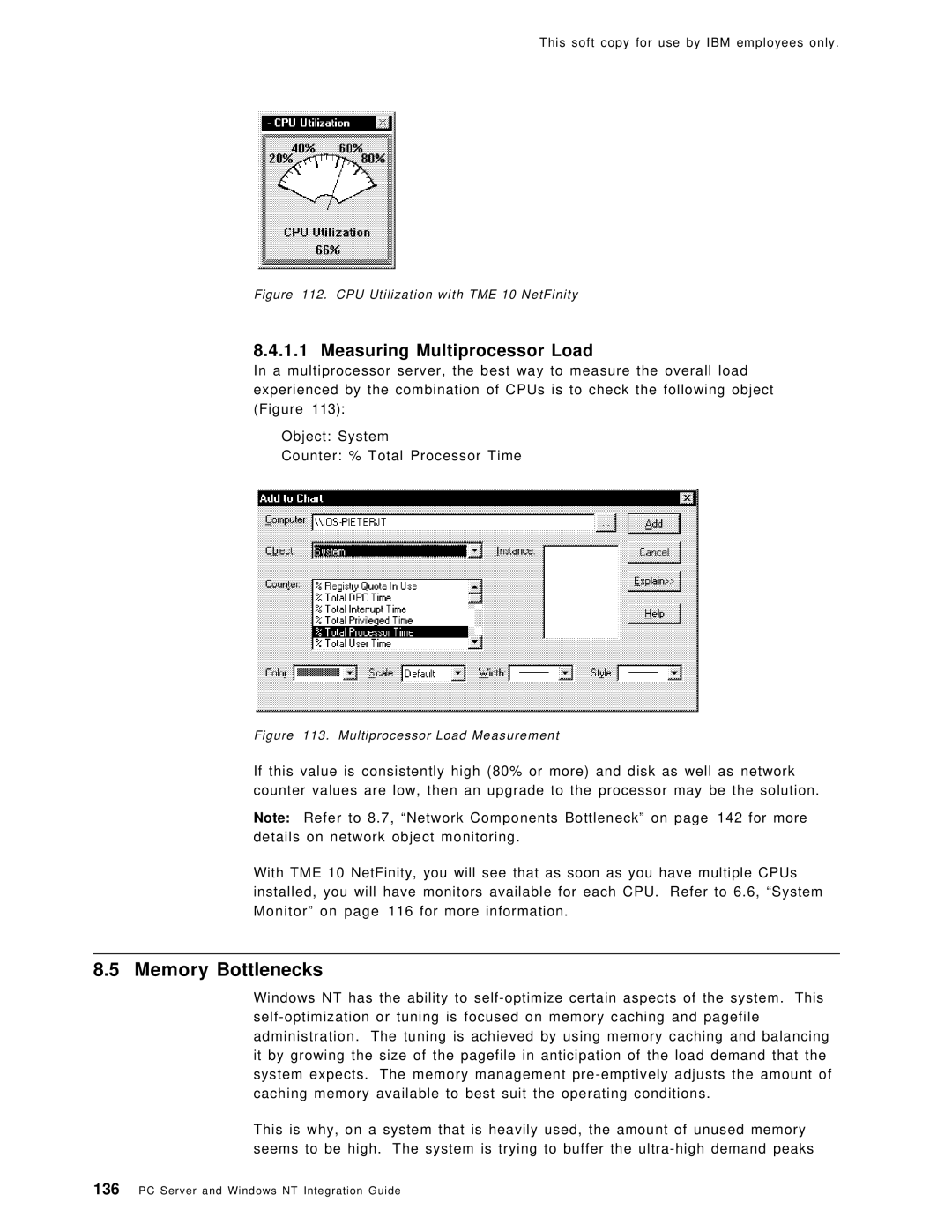
This soft copy for use by IBM employees only.
Figure 112. CPU Utilization with TME 10 NetFinity
8.4.1.1 Measuring Multiprocessor Load
In a multiprocessor server, the best way to measure the overall load experienced by the combination of CPUs is to check the following object (Figure 113):
Object: System
Counter: % Total Processor Time
Figure 113. Multiprocessor Load Measurement
If this value is consistently high (80% or more) and disk as well as network counter values are low, then an upgrade to the processor may be the solution.
Note: Refer to 8.7, ªNetwork Components Bottleneckº on page142 for more details on network object monitoring.
With TME 10 NetFinity, you will see that as soon as you have multiple CPUs installed, you will have monitors available for each CPU. Refer to 6.6, ªSystem Monitorº on page 116 for more information.
8.5 Memory Bottlenecks
Windows NT has the ability to
This is why, on a system that is heavily used, the amount of unused memory seems to be high. The system is trying to buffer the
136PC Server and Windows NT Integration Guide
